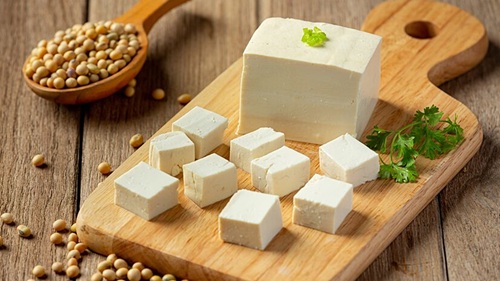Paneer, or Indian cottage cheese, is one of the most widely consumed dairy products in India. From paneer butter masala to palak paneer, this protein-rich food is a staple in vegetarian diets. However, with increasing demand, many unscrupulous sellers prepare fake paneer using starch, detergent, or synthetic milk. Consuming such adulterated paneer can harm health, leading to stomach problems, food poisoning, and long-term issues. Knowing how to identify genuine paneer is, therefore, essential for every household.

1. Check the Appearance
- Original Paneer: Has a smooth, uniform white to pale cream color with no cracks or rough edges. It looks slightly moist and soft.
- Fake Paneer: May look excessively bright white, too hard, or spongy. Sometimes, it appears unusually shiny due to synthetic ingredients.
2. Smell Test
- Fresh paneer has a mild, milky aroma.
- Fake or adulterated paneer often gives off a soapy, sour, or chemical-like smell because of starch or detergent mixing.
3. Taste Test
- Real paneer has a mild, creamy, and slightly sweet taste.
- Fake paneer can taste chalky, bitter, or rubbery. If you feel a soapy aftertaste, it may contain harmful chemicals.
4. Texture and Touch
- Original paneer is soft, moist, and breaks easily when pressed.
- Fake paneer feels too rubbery or hard and doesn’t crumble easily. It may even feel slippery if detergent has been used.
5. Hot Water Test
This is one of the easiest home methods:
- Take a small piece of paneer and put it in hot water for 10 minutes.
- Original paneer will remain soft and retain its shape.
- Fake paneer becomes rubbery or starts breaking apart. If detergent is present, you may notice froth in the water.
6. Iodine Test for Starch
To check for starch adulteration:
- Put a few drops of iodine solution on a piece of paneer.
- If the color changes to blue or black, starch is present (indicating fake paneer).
- Pure paneer will not show any color change.
(Note: Iodine is easily available at medical shops for home testing.)
7. Burning Test (With Caution)
- Take a small piece of paneer and burn it carefully.
- If it gives off a plastic-like smell, it indicates synthetic adulteration.
- Pure paneer will smell like burnt milk solids.
8. Check Milk Source and Purchase Point
- Always buy paneer from trusted dairy shops or brands.
- Packaged paneer should have FSSAI certification and expiry date.
- Avoid buying loose paneer from unknown vendors, especially if sold at unusually low prices.
9. Health Signs After Consumption
If after eating paneer you feel:
- Nausea
- Bloating or indigestion
- Unusual throat irritation or burning sensation
…it may be due to consumption of fake or adulterated paneer.
Final Thoughts
Identifying fake paneer at home is not difficult if you know the right signs. By checking its color, smell, texture, and reaction in hot water or iodine solution, you can easily spot adulteration. Since paneer is an everyday protein source in Indian diets, buying genuine paneer is not just about taste but also about health and safety. Always purchase from reliable sources and, when possible, prepare paneer at home using fresh milk for complete assurance.